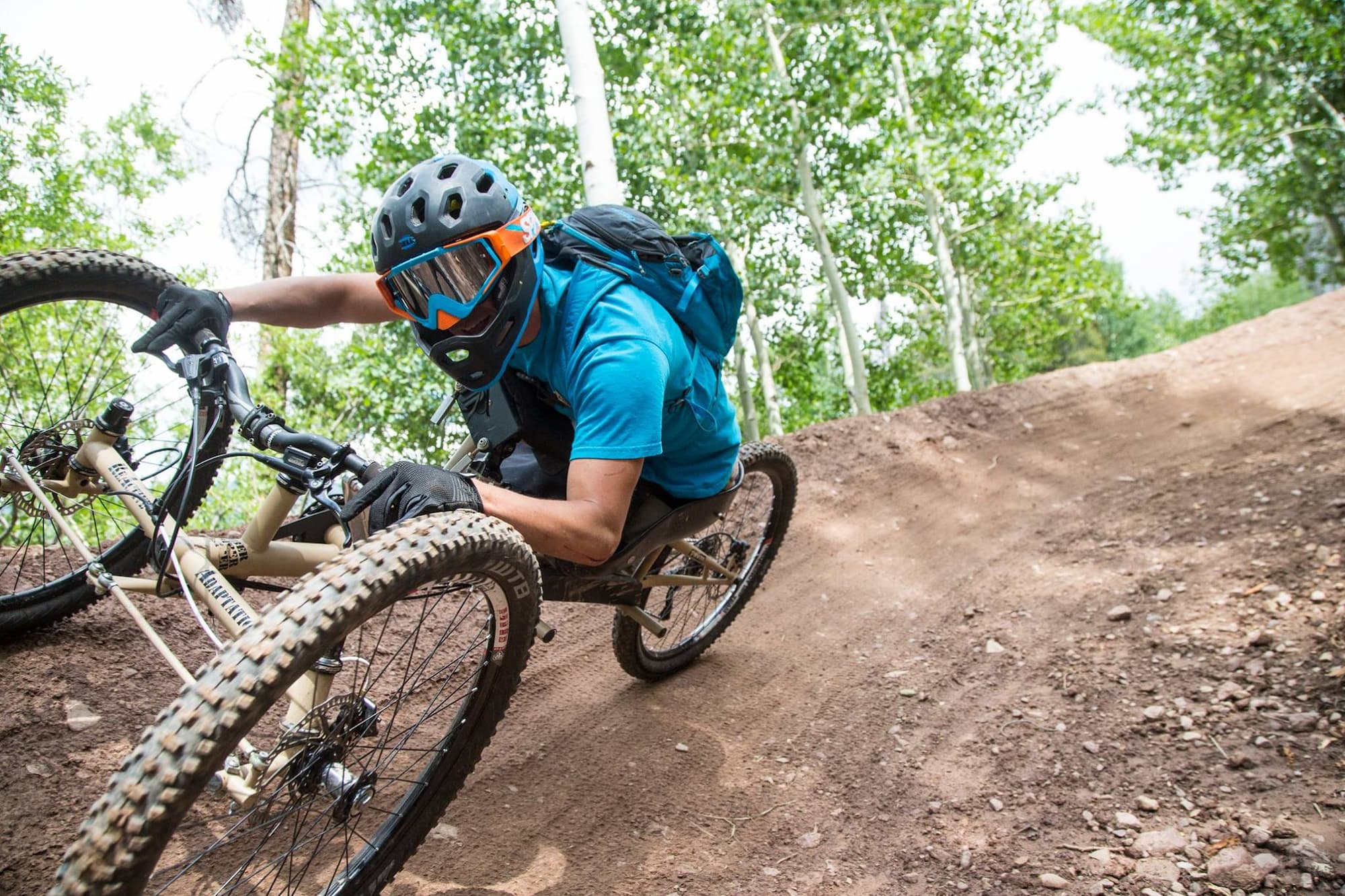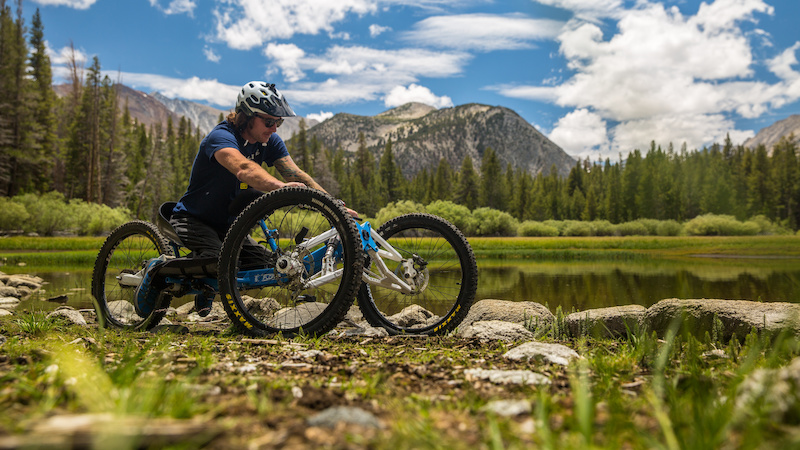GPS technology, once reserved for tech-savvy adventurers, has now revolutionized the way seniors embrace cycling in their golden years. In this informative blog post, we research into the world of biking after 70, exploring the unstoppable rise of tricycles, the game-changing role of GPS devices, and the inspiring stories of seniors conquering rugged terrains on adaptive mountain bikes. Join us as we uncover the joys, challenges, and triumphs of seniors who refuse to let age limit their passion for cycling.
Key Takeaways:
- Adaptive mountain biking: Older adults can enjoy mountain biking by using adaptive equipment tailored to their needs and abilities.
- Tricycles: Tricycles are a popular choice for seniors who want a stable and comfortable ride while cycling.
- GPS technology: GPS devices can help seniors navigate unfamiliar routes and track their cycling progress.
- Physical benefits: Biking can help improve cardiovascular health, muscle strength, and balance in older adults.
- Mental benefits: Engaging in cycling activities can promote mental well-being by reducing stress and increasing overall happiness.
Biking after 70 can be a rewarding and fulfilling activity, and there are various adaptations and technologies available to make it more accessible for older riders. One such adaptation is the use of tricycles, which provide additional stability and balance compared to traditional bicycles. These tricycles can be customized with various features such as GPS tracking and electric assist motors to make them more user-friendly for older riders13.
Additionally, adaptive mountain biking (MTB) is a growing field that caters to riders with disabilities or physical limitations. These adaptations can include specialized equipment such as handcycles, recumbent bikes, and electric-assist bikes, as well as modifications to existing bikes to accommodate riders with specific needs2.
One notable example of adaptive MTB is Jake O’Connor, who has undergone multiple surgeries and uses a custom-made recumbent tricycle to continue pursuing his passion for cycling1.
Overall, biking after 70 can be a challenging but rewarding experience, and there are many resources and adaptations available to help older riders continue enjoying the sport.
Tips for Biking After 70
Cycling after the age of 70 can be a rewarding and healthy activity, but it’s essential to consider certain tips to ensure a safe and enjoyable experience. Here are some valuable tips gathered from various sources:
- Stretch and Recover: Prioritize stretching, proper nutrition, and rest to maintain flexibility, prevent injury, and recover effectively1.
- Build Strength and Balance: Engage in strength training exercises to prepare your body for cycling, focusing on the core and upper body. Balance exercises like yoga can help improve stability2.
- Active Recovery and Massage: Incorporate active recovery activities like easy spins or walks after intense rides. Regular massages can help alleviate muscle soreness and stiffness2.
- Stay Hydrated: Drink plenty of water before, during, and after your rides to maintain hydration levels, especially as you age2.
- Safety Concerns: Pay attention to safety measures such as warming up with stretches, wearing reflective gear, following road rules, and listening to your body to prevent injuries2.
- Adapt Bike Setup: Adjust your bike setup as you age to accommodate reduced flexibility in the spine and hips for a more comfortable riding experience3.
- Find What Works for You: Explore new challenges that excite you while being mindful of potential fragility. Adapt your routes to suit your current physical condition4.
- Time Management: Efficiently manage your time to fit cycling into your routine, whether you are retired or still working full time4.
- Progressive Training: Consider incorporating progressive high-intensity training into your routine to positively impact the aging process and improve fitness levels4.
- Compete Within Your Age Group: Engage in group rides or events that cater to your age group or skill level to stay motivated and competitive4.
By following these tips, older cyclists can continue enjoying the benefits of cycling while staying safe, healthy, and active well into their golden years.
Choosing the Right Bike
Tricycles for Stability and Comfort
Stability is key when selecting a bike for those over 70. Tricycles are a popular choice for their added balance and comfort. The three-wheel design provides extra stability, making it easier to mount and dismount, and allows riders to pedal at their own pace without worrying about balance. They are also equipped with a comfortable seat, making long rides more enjoyable and reducing strain on the back and joints.
Adaptive Mountain Bikes for the Adventurous
Adventurous seniors looking to hit the trails can opt for adaptive mountain bikes. These specialized bikes are designed to tackle rough terrains while providing stability and control. The bikes come with features like wider tires for better grip, adjustable suspension for a smoother ride, and customized frame designs to accommodate different physical needs. For those with a sense of adventure, adaptive mountain bikes offer the thrill of off-road cycling with added safety features.

The high-end components and advanced engineering of adaptive mountain bikes ensure a fun and secure riding experience for seniors looking to explore the great outdoors. It’s important to choose a bike that fits your abilities and needs, and with the right adaptive features, these bikes open up a world of possibilities for seniors wanting to stay active and adventurous.
Navigating the Trails and Roads
The Role of GPS and Tech in Senior Biking
To optimize their riding experience, many senior bikers are turning to GPS and other tech tools. These devices help in mapping out trails, tracking distance covered, monitoring heart rate, and even calling for help in case of emergencies. With user-friendly interfaces and accessibility features, GPS technology is making biking safer and more enjoyable for the elderly.
Safety Tips for the Elderly Cyclist
For senior bikers, safety should always be a top priority. Here are some crucial tips to ensure a secure and enjoyable biking experience:
- Always wear a properly fitted helmet to protect your head in case of falls.
- Regularly check your bike for any maintenance issues to prevent accidents on the road or trails.
- Ride during daylight hours and avoid cycling in severe weather conditions.
Knowing and following these safety tips can significantly reduce the risk of injuries and mishaps while biking.

Another Safety Tip to Consider
Another crucial safety tip for elderly cyclists is to always carry identification and emergency contact information with you. In case of accidents or medical emergencies, having this information readily available can help first responders provide you with the necessary assistance promptly.
- Knowing who to contact in case of emergencies can make a difference in getting timely help when needed.
Some recommended bikes for older riders
- Comfort Bikes: These bikes are designed with the ergonomic interests of senior riders in mind. They offer an upright posture, flat bars, and a lightweight aluminum frame. Saddles are wide and cushioned for comfort3.
- Cruiser Bikes: With wide seats and large tires, cruiser bikes provide a smooth ride on bumpy roads. They are ideal for older adults with joint issues3.
- Hybrid Bikes: Hybrid bikes offer versatility, allowing seniors to ride on paved roads and in more rugged terrain. They balance comfort and performance, making them suitable for seniors without joint issues3.
- Electric Bikes (E-bikes): E-bikes are a great option for older adults who may not have the strength and cardio required for a bike ride. They can assist with climbing hills and provide a more leisurely riding experience3.
- Recumbent Bikes: Recumbent bikes have a leant-back ride position with a seat and back support. They are easier to mount and dismount and reduce stress on the lower back and joints13.
- Icons Bikes: Designed by Islabikes for riders over 65, these bikes feature lightness, comfort, and easy bike gears. They also have a more stable design, lower seated position, and wider tires for better stability and ride comfort1.
- Sixthreezero EVRYjourney: This bike is lightweight, has hand brakes, a solid aluminum frame, and up to seven speeds. It is ideal for older women and is available in various colors4.
- Schwinn Wayfarer: This bike is designed for flat, paved roads and has a comfortable seat for good posture and an upright riding position4.
When choosing a bike for older riders, comfort, stability, and ease of use are essential factors to consider. It’s also recommended to test-ride different types of bicycles to find the one that feels the most comfortable5.
Benefits of Biking at an Advanced Age
-
Physical Health Advantages
Biking Improves cardiovascular health, strengthens muscles, and boosts joint flexibility. Regular Exercise Reduces the risk of chronic diseases such as heart disease, diabetes, and obesity. Biking at an advanced age offers numerous physical health benefits. Regular cycling can significantly improve cardiovascular health, strengthen muscles, and increase joint flexibility. It also helps in reducing the risk of chronic diseases like heart disease, diabetes, and obesity.
- Mental Well-being and Social Engagement
Mental well-being and social engagement are equally important benefits of biking at an advanced age. Biking can enhance mood by reducing stress, anxiety, and depression, leading to overall mental well-being. Additionally, engaging in cycling activities allows individuals to interact with like-minded peers, fostering a sense of community and belonging.Enhances Mood Reduces stress, anxiety, and depression, promoting overall mental well-being. Social Interaction Connects individuals with like-minded peers, fostering a sense of community and belonging.

Inspiring Stories from the Elder Biking Community
Overcoming Challenges
Biking after 70 comes with its own set of challenges, but many seniors have shown incredible resilience and determination in overcoming them. From dealing with physical limitations to conquering fear and self-doubt, these individuals have proven that age is just a number when it comes to pursuing your passion for cycling.
Achievements and Milestones
One of the most remarkable aspects of the elder biking community is the range of achievements and milestones that individuals have accomplished. Whether it’s setting personal distance records, completing challenging mountain bike trails, or participating in long-distance cycling events, these seniors continue to push the boundaries of what is possible in the cycling world.
from conquering their first mountain passes to begining on solo cycling adventures across the country, these individuals serve as a true inspiration for cyclists of all ages. Their stories remind us that with determination and perseverance, anything is achievable, regardless of age.
To wrap up
Now, we have explored the world of biking after 70, from riding tricycles for stability to utilizing GPS technology for navigation and adapting mountain bikes for a customized experience. These stories of seniors continuing to enjoy the thrill of biking serve as an inspiration to all age groups. With advancements in technology and adaptive equipment, age is no longer a barrier to exploring the great outdoors on two wheels. It is never too late to embrace the joy of cycling and stay active well into older age. So, grab your bike, whether it be a tricycle, GPS-equipped road bike, or adapted mountain bike, and initiate on your own exciting journey on the open road or rugged trails.
FAQ
Q: Why choose a tricycle for biking after 70?
A: Tricycles provide seniors with added stability and balance, making them a safer option for biking after 70. They are easier to mount and dismount, and offer a more comfortable riding experience.
Q: How can GPS enhance the biking experience for seniors?
A: GPS devices can help seniors plan their routes, track their progress, and navigate unfamiliar areas with ease. This technology can enhance safety and provide peace of mind during biking adventures.
Q: What are some benefits of adaptive mountain biking for older adults?
A: Adaptive mountain biking allows older adults to enjoy off-road biking experiences regardless of physical limitations. It promotes physical activity, mental well-being, and a sense of accomplishment.
Q: How can seniors stay safe while biking after 70?
A: Seniors can stay safe while biking after 70 by wearing a helmet, following traffic rules, using reflective gear, maintaining their tricycle or bike, and staying hydrated during rides. It’s also important to choose appropriate routes and be aware of one’s physical limitations.
Q: Can biking after 70 improve overall health and well-being?
A: Yes, biking after 70 can improve cardiovascular health, joint flexibility, muscle strength, balance, coordination, and mental health. It offers a low-impact form of exercise that can boost overall well-being and quality of life for seniors.


